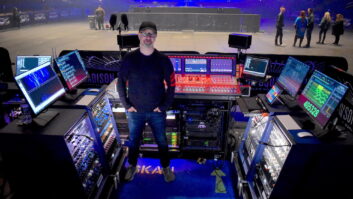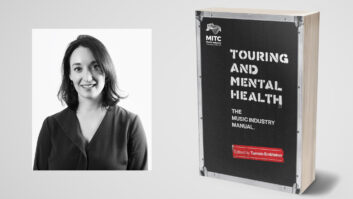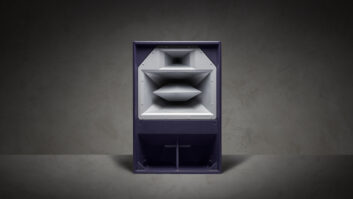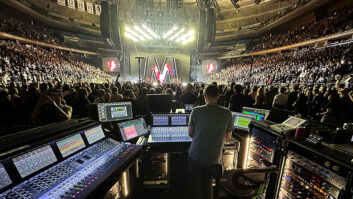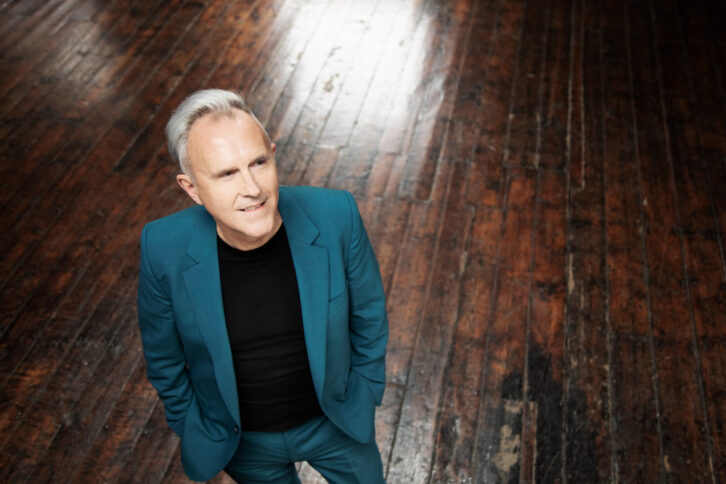
New York, NY (June 07, 2023)—Ever since he first hit it big in the 1980s, Howard Jones has always blazed his own trail. While much of the era’s synth-pop traded in images of chilly alienation, nuclear armageddon and a dystopian future, the keyboard whiz carved out his own niche with hits that overflowed with positive energy. Today, optimistic bangers like “Things Can Only Get Better,” “Everlasting Love,” “Life in One Day” and more are still staples of his live set, and he’ll be sharing their good vibes with audiences this summer as he tours across the U.S. with fellow 80s vets Culture Club and Berlin on a 25-date amphitheater tour starting July 13.
Jones’ relentlessly positive attitude has always gone hand-in-hand with a Herculean work ethic. A true roadwarrior for decades, he tours multiple times a year, whether solo or with a band, with performances ranging from acoustic to thoroughly electric. When not on the road, Jones continues to create new music, and this summer’s journey is just the latest in a string of tours supporting 2022’s Dialogue album. While some of the new songs have slotted into his live set easily, their creation was another story, as they came into this world during the height of COVID. Lockdown may have forced Jones to focus on recording instead of the road, but even he found it difficult to remain positive in the face of a deadly worldwide pandemic.
Ahead of the tour, Jones sat down with Mix to dialogue about Dialogue, his personal studio, keeping songs fresh on the road and more. (Comments have been lightly edited for clarity).
Dialogue is part of a larger series of albums; how did that come about?
It’s a series of four, and each has a theme. The first one was Engage, which was about not being a bystander and getting involved, while the second one, Transform, was about “We’re going to change the world, but if we want to do that, we have to change ourselves first.”
Now the third one, Dialogue, is about this thing that we really need—as human beings, we have the unique ability to exchange ideas and have conversations where we can learn from each other and find common ground in each other’s maybe differing views. A song like “Who Do You Really Want To Be” is really about saying that silence is the thing that’s tearing us apart; we really need to talk, we really need to communicate.
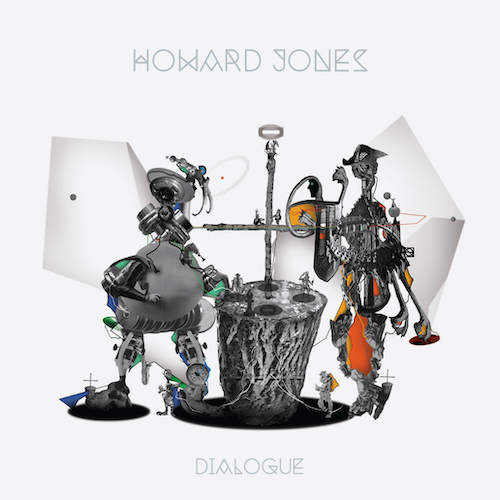
Musically, it came together during lockdown time, so I was in my studio with not much else to do. We couldn’t really go and see anybody; did a lot of streaming. I waited to do the lyrics until I felt a little bit more positive about the outcome for everyone.
Was that typical for how you write?
No! Normally, once I’ve got a good, strong, musical idea, the lyrics fall out very, very quickly—but not in this case! I parked the musical ideas because I just wasn’t in the right frame of mind. Life was just so extreme being locked away. I waited and I think that was really good for me, because when I finally did start writing, they all flooded out. It was like they were accumulating behind the scenes.
That must have been a relief—like “It’s still there after all that’s happened.”
I feel like that all the time! [laughs] When I come to write music and lyrics, I always think, “Can I still do this” or “I know I’ve done it before, but doesn’t mean I can do it now”—that sort of ridiculous insecurity. But, you know, you keep pushing on and it works and you do it.
In your case, where you’re known for a lot of really positive songs, I imagine the pandemic could really get in the way of having an optimistic view.
The pandemic more affirmed that I wanted to do that, because I think when things get difficult and we are faced with huge challenges, that’s when we have to feel most hopeful about the future—to help us to take the actions that are needed to overcome it. It intensifies all those things really.
With the pandemic, everyone was sharing a common experience, being scared about going out and catching this Dreaded Lurgi and dying from it. Everyone had to share that; rich and poor, we had to all deal with it. I always think of my lyrics as meant for those times, when things aren’t going well and you just need a little boost to help get over the next little hurdle—to get through it and see the great new vista on the other side.
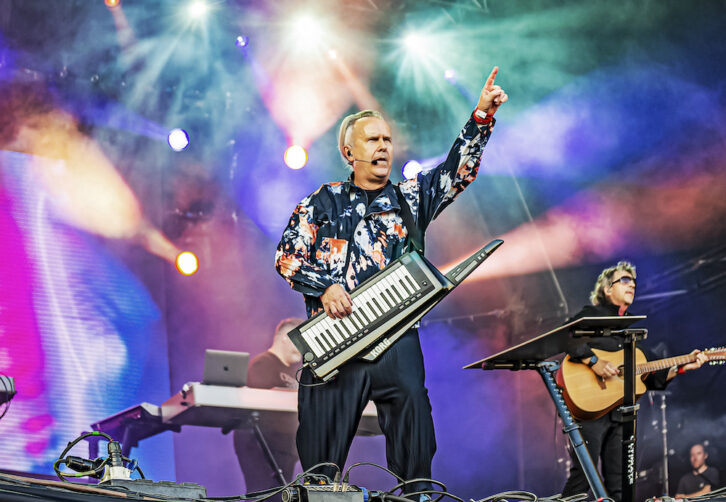
Developing the musical side, then—how did that work?
I had plenty of time to experiment, as you might imagine [laughs], and I was able to come up with some cool sounds. When I sit down at the piano, the chords and then the vocal melodies come pretty much at the same time, but when I’m working with the synths, I’m never sure whether a vocal will actually work over the top of it or not; most of the time it did.
It seems like every time I come to do a new project, different things happen—which is good in a way, because you’re sort of stumbling across new ways of doing things. I always think that playing, in a sort of childlike sense, with your work and your art is really important in order to bring out new ways of looking at it and not become set in one’s ways, because you’re always trying different things.
You’ve collaborated for years with Robbie Bronnimann, with him not only handling keyboards, sequencing and sound manipulation in your live band, but also working with you in the studio. What is that recording process like?
I develop a song, get most of the sounds and the structure, and then send it off to Robbie. Robbie makes it sound even better, because he can do stuff that I can’t do—I’m into the writing and the sound creation, while Robbie is such a great mixer. He sends me back stuff, I write tunes and lyrics over the top, and then we get together to do the final mix and sort everything out. I like being in the same room with the person because you can just fire off each other’s enthusiasm more easily. Our creative collaboration has gone on for 20 years or more, so he really understands what I what I like and what I’m aiming for, and I really appreciate his talent.
What sorts of gear do you have in your studio these days?
Well, I have quite a collection of hardware synths now; I went through a phase where I was selling them off, but I’ve now been acquiring! I think I’ve been influenced by BT who’s been telling me there are certain synths I have to have.
I have a Prophet 8 from Rupert Hine, my great friend who passed away [Hine produced Jones’ first two albums, Human’s Lib and Dream Into Action]. I used to have two of them, but to have his is really special for me. I also bought a Prophet 5 from someone I used to teach keyboards to when I was struggling to get somewhere about 40 years ago. I bought that synth from him and I got some new ones from a company in Bristol—it’s a UDO Audio Super 6, which is a fabulous new keyboard. Also, I have a wavetable-type one called the ASM Hydrasynth that I use; I like to buy synths that have really different characteristics to them. There’s also all the software stuff that I use, and everyone will know those. Whatever makes a great sound; I combine the two; sometimes I play parts in and then edit them within an inch of their life.
Anyway, I mean, give me the most simple synth and I’ll make a sound, and that’s why I say it’s not about the gear, it’s about the creativity of the person behind it. If you’re creative, you can create something from a wooden table, banging a great rhythm, you know what I mean? Nothing should be able to stop you from doing great things.
For a DAW, I use Logic and we mix in Logic as well. I do so much with MIDI and Logic is very good with that; it’s the program that I’ve invested years of my life learning how to manipulate and there’s still loads I don’t know how to do in it—Robbie probably does! It’s been great, and it’s constantly being upgraded and it’s reliable. We love it to bits, and that’s probably where I’m going to stay, but I also think it’s good to learn new things. When you’re buying new synths, you always have to learn something, so it’s good to try all different things.
I just use one mic—the Røde Classic valve mic. I’ve had it now for over 20 years and it’s “my mic.” The valve sound just suits my voice, so I stick with what works. I don’t even put a pop shield in front of it anymore, because I use my onstage in-ears while singing so that I don’t get any extraneous noise caused by headphones creaking. [Laughs] Robbie gets really annoyed if I give him vocals that have noises on them. I don’t get too much popping and buzzing; I angle my singing to compensate for that. I spend hours and hours doing vocals—experimenting with the sounds, with diction. It’s weeks of work, especially on this album, because there are hundreds of harmonies everywhere as well, which I love doing.
For studio monitors, I have Dynaudio BM12 monitors. They’re self-powered and I love this speaker so much. Robbie’s got the new upgrade of them; we used them right at the end of the album to check our mixes and honestly, I don’t know what they call them, but they just blow your mind, they’re so good. Everyone has their own favorite speakers, where you know if they sound a certain way in your studio, they’re gonna sound good in the car and coming off your Homepod and everything like that.
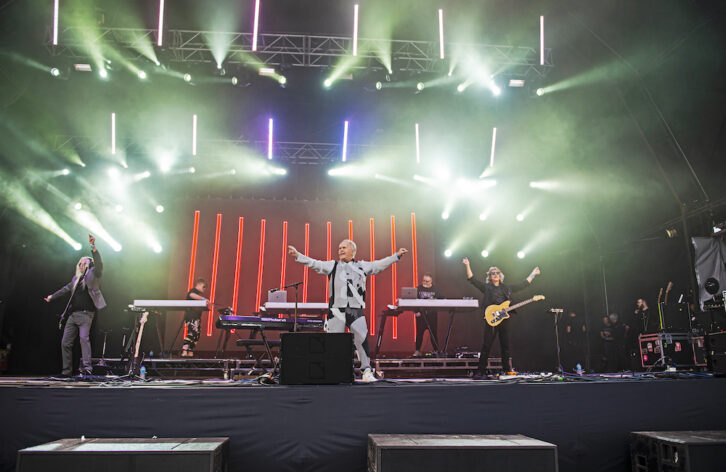
When you’re putting an album together, whether it’s during the writing process or later on mixing, are you thinking “How are we going to make this translate to the concert stage?”
They’re two separate things, really. You’re creating music to be listened to at home and in the car, on earbuds and all that. When we work out how we’re going to do it live, usually we take out a lot of stuff, because you don’t need the amount of information. Live, things sound bigger when there’s less—so we try to remember that! [Laughs] We use Ableton when we transfer it to the live thing.
Back To The Retro Futura with Howard Jones, Tom Bailey and Midge Ure
Touring, we’ve got Nick Beggs [Chapman Stick, bass guitar], Robin Boult [electric and acoustic guitars] and Dan Clarke [keyboards, electronic percussion] and they give it extra power as well. We’ll ditch some of the keyboard parts to allow room for the guitar, but because I’m so passionate about bass, Nick follows what I’ve written and we just keep experimenting with things until it sounds right.
During soundcheck, I go out and listen through the big PA and we just make little adjustments. We’re always looking for the optimum thing; we never settle down and go, ‘Oh, that’s it.’ Even with “New Song” [Jones’s first single], there’s still ways to make it sound even better. It’s having that desire, isn’t it, to keep moving forward.
Obviously, when I do shows, it would be really horrible of me not to play the songs that people know and love and that they’ve grown up with. I feel an absolute duty to do that, but for me, what’s important is that you always give them a bit of a fresh look. I’m really committed to doing that upgrading and reinventing the work but not making it so that people don’t recognize it. That would be a crime because people love to hear certain synth sounds and parts of the structure. So I’m wary of going too far, but I think giving things a nice facelift each time we go out on tour is a really good idea.
Case in point, I caught one of your shows last year and with “Things Can Only Get Better,” at the end, you took a massive left turn, turning it into straight-up, rave-style EDM. You could see the crowd’s faces suddenly went “Huh?” And then they were “Yeah, I’m totally there—let’s go” and they were all swept up in it.
I absolutely love that moment in the show; it builds and builds and builds towards that moment—and to me, it’s so significant because what it means that the people who have grown up with me, they’re still up for something a bit new and jumping around and having a youthful spirit!
That’s part of what the music is about for me; it’s like saying, “Let’s not get set in our ways. We love things from the past, but we love things that are going on now—and we’re looking into the future as well.” That moment where everyone goes crazy, I see it and think “Yeah, that’s proving it. Yeah, I am doing the right thing. I’ll keep on this track.”
The Letting It Go Show tour with Culture Club, Howard Jones and Berlin kicks off July 13, 2023 in West Palm Beach, FL and runs through to Concord, CA on August 20.




